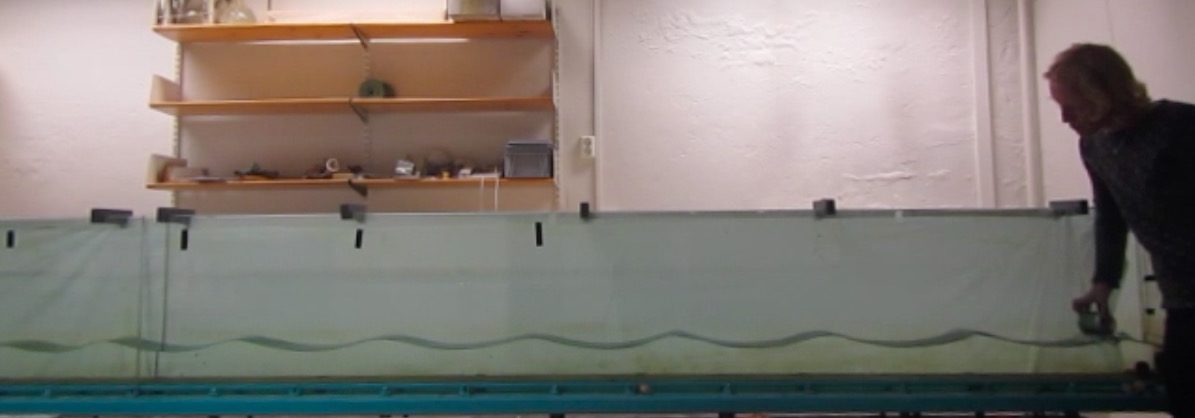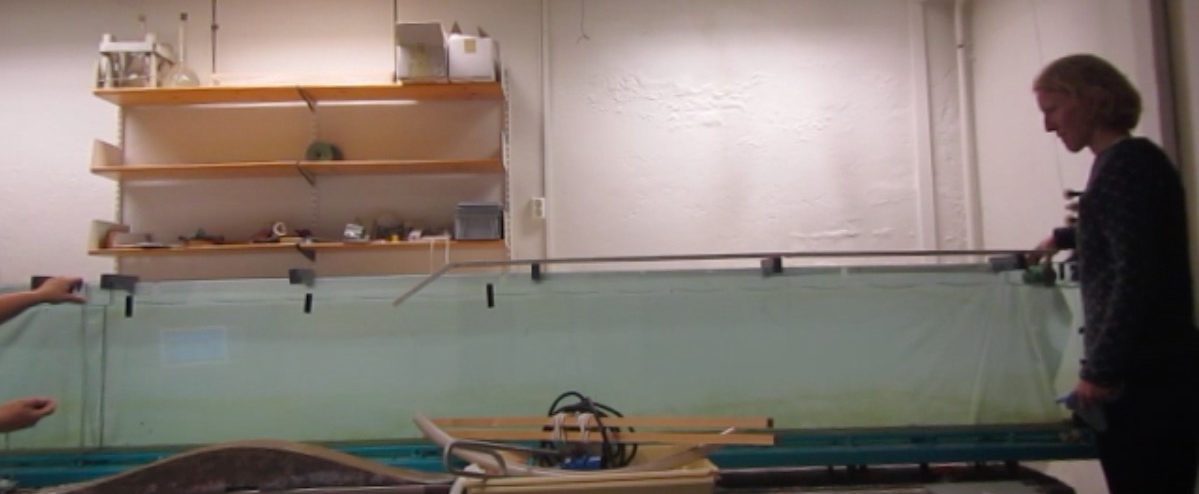Calculating the phase velocities of shallow water and deep water waves from the dispersion relation sometimes seems a bit pointless to students (at least it sure did to me (Mirjam) when I had to do it during my studies years ago). So Elin and I played around with it a bit (thanks to a suggestion by Tor Gammelsrød, who always comes to visit us in the lab!), and now there is a new experiment included in GEOF213 to complement the theoretical exercises that were already in place.
Look at Elin exciting shallow water waves in the picture below. It’s quite easy to imagine how one could measure the waves’ phase speed in the lab, just by taking the time it takes for them to run over a known distance, right? (Btw, this is the shallow water experiment that is part of the 2nd-year instruction, so students should already be familiar with shallow water waves)

Things get a little more complicated if there is more water in the tank, as you see in the picture below. Not only do waves have a smaller amplitude (because we didn’t want to risk flooding the lab), but also there is the thing about phase velocity and group velocity in deep water, that makes both of them a lot harder to observe! We don’t want any spoilers here, but you know what I am talking about…

This is such a simple experiment to run, but having the 6m long tank really helps because it gives us at least some time to observe waves before the reflections from the far end come back to haunt us.
And it is quite difficult to excite waves with more or less constant wave lengths. “Allegro!” is what Elin gave me as instructions for what kind of waves she wanted. Playing with a tank with Elin is always the best!
